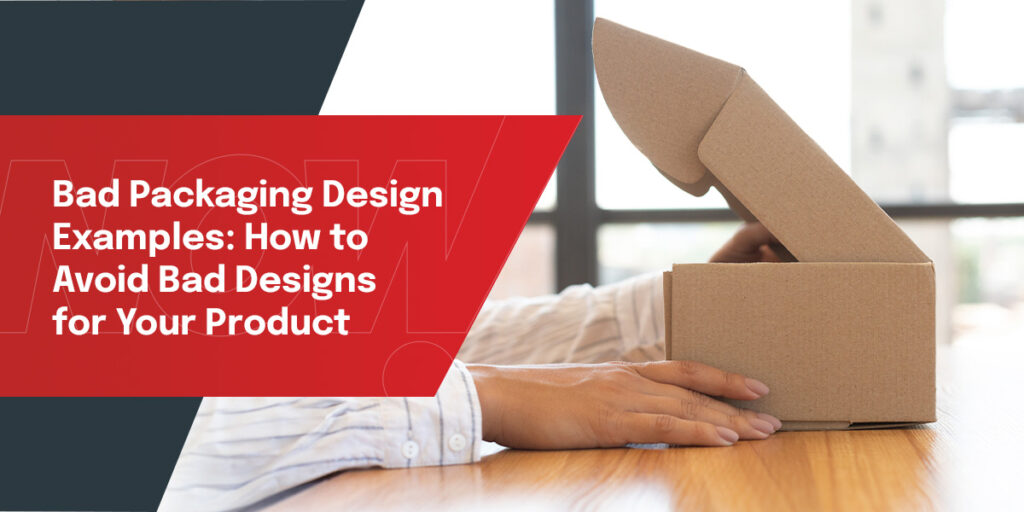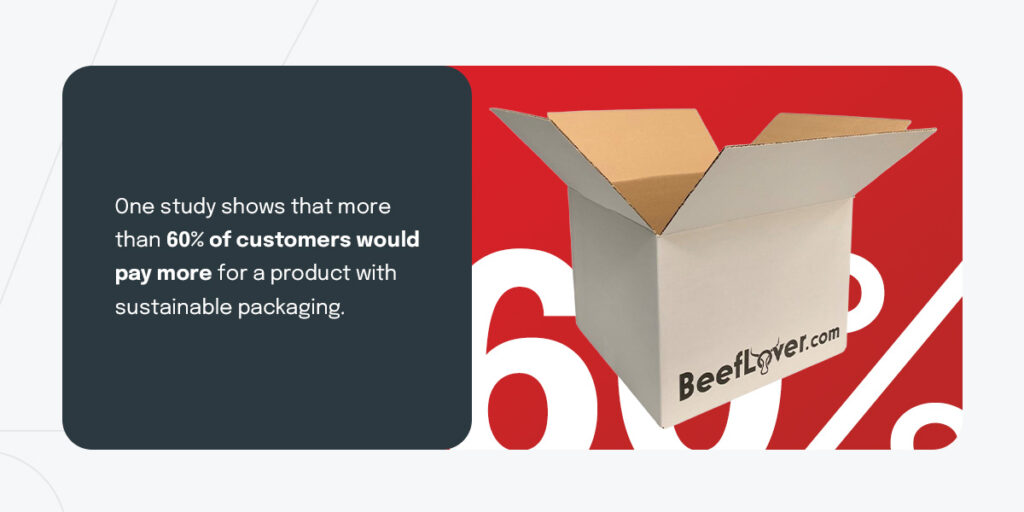
Good packaging feels like a perfectly wrapped Christmas present. It uses vibrant designs and streamlined functionality to create an incredible unboxing experience. Bad packaging, on the other hand, feels like you’ve personally upset Santa Claus — it’s generic, thoughtless and sometimes downright confusing.
So, how can companies provide the best packaging experience possible? By taking note of bad packaging designs and avoiding them at all costs. Read on for the biggest mistakes and the top tips to create packaging that’s memorable and effective.
Bad package design reflects negatively on the brand, product worth and company values. It can lead to increased costs, low customer retention and environmental harm. Here are the top five bad packaging examples to avoid:
Have you ever gotten into a wrestling match with product packaging? If customers have to fight with the packaging to get to their product, then it may be a structural design issue. Bad package design can negatively affect product perception and one of the most crucial parts of modern product marketing — the unboxing experience.
The unboxing experience is about customers forming an emotional connection with the product. Structural design issues can turn those emotions from excitement to frustration. Here are some common structural design issues:
Opening a product should be a stress-free experience, but with bad product packaging design, it’s a frustrating encounter for customers. Complicated opening instructions can give consumers a negative brand experience and may affect future sales.
A common user experience problem is accessibility for people with disabilities and older adults. Hard-to-read fonts and blister packs that make customers fight to get to the product can create a negative brand perception. Storage and resealing issues also build added frustration and affect product quality, which can discourage consumers from purchasing the item again.
Product dispensing difficulties are another example of a user experience problem that causes poor product perceptions. It results in frustration whenever the consumer uses the product and has a negative effect on customer engagement. Product packaging that is excessively bulky and lacks accessibility features affects portability, which discourages shoppers from making a purchase.
The main purpose of packaging is to protect the product, and when that fails, it affects product integrity. Exposing products to light, humidity and other elements often gives customers a subpar item. It discourages future purchases. Poor quality also opens the company up to bad publicity and a rippling negative perception effect. Here are some of the bad designs that affect the product integrity:

Picture this: Products meant to save the planet covered in plastic, individually wrapped everything and so many layers of packaging that it can suffocate a small village — do these bad packaging examples sound familiar?
Companies posing as being sustainable but using excess materials, non-recyclable elements and unnecessary individual wrapping can reveal that the business is not as environmentally conscious as it appears. This bad packaging mistake can make the company appear deceptive and may create a negative brand perception.
More and more companies are attempting to change their processes to be more sustainable and ethical. One study shows that more than 60% of customers would pay more for a product with sustainable packaging, so it’s vital for businesses to prioritize environmentally friendly packaging.
Have you ever seen a customer stand in the aisle trying to decipher a product box like it was a Da Vinci code? Unclear usage instructions are one of the most common product packaging mistakes. They confuse shoppers and lower the chances of making a purchase.
Poor information hierarchy is another example of a visual communication flaw. Customers don’t want to read the story about the company founders’ favorite breakfast — they want the important facts first. Presenting critical information in illegible fonts is another mistake brands tend to make. It can cause confusion and result in incorrect product usage.
So, how do you implement design features that counteract these bad packaging examples? Follow these tips to create packaging that protects your product and makes it easier for your customer to purchase:
Functionality is key to providing a valuable unboxing experience that stands out. Here are some tips for functional improvements that make your packaging more enjoyable for customers to open:
Most bad designs for product packaging don’t consider the shopper’s needs. For example, studies show that older adults require packaging that hints toward hand positions, movements and instructions. Custom packaging designed with the consumer in mind should have these features:
The best measure businesses can take for sustainable packaging is to use corrugated cardboard. Customers can recycle it or compost it for healthy soil. Custom corrugated cardboard boxes offer the following benefits:
At Custom Boxes Now, we have over 60 years of experience creating personalized boxes that stand out on the shelves and online. We custom-make sustainable corrugated cardboard boxes based on your business needs. All you have to do is share your desired packaging artwork specs and product measurements.
Our box configurator allows you to build a custom box that suits your vision. Once we have your specs, we’ll send you a structural prototype to ensure you’re satisfied. If you’re not sure what your business needs, you can send us a sample of your product, and we’ll create the perfect-sized custom box for you with your approved art.
Contact Custom Boxes Now and let us help you create packaging that gives your product the attention it deserves.